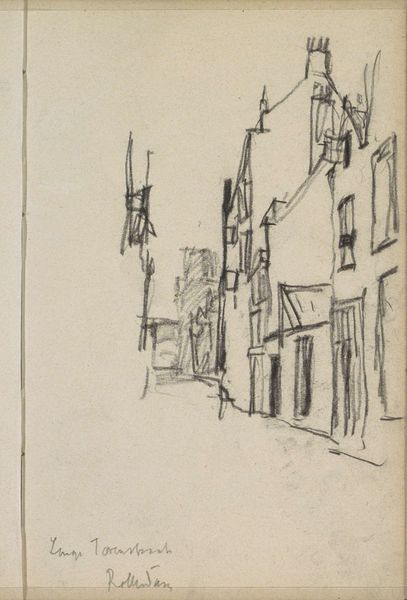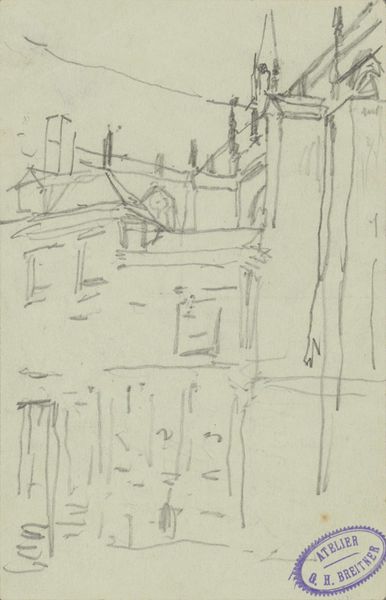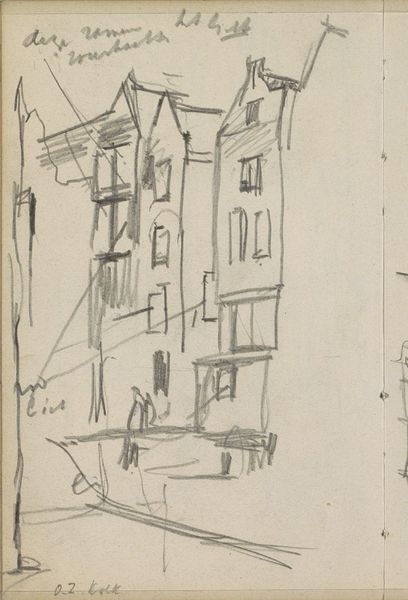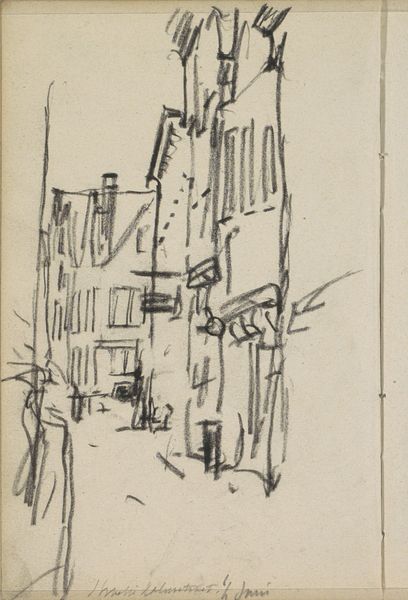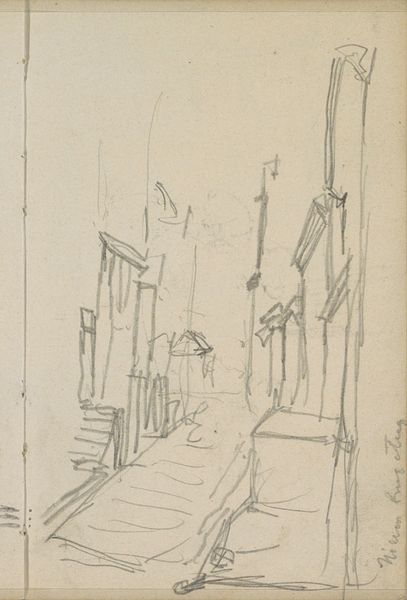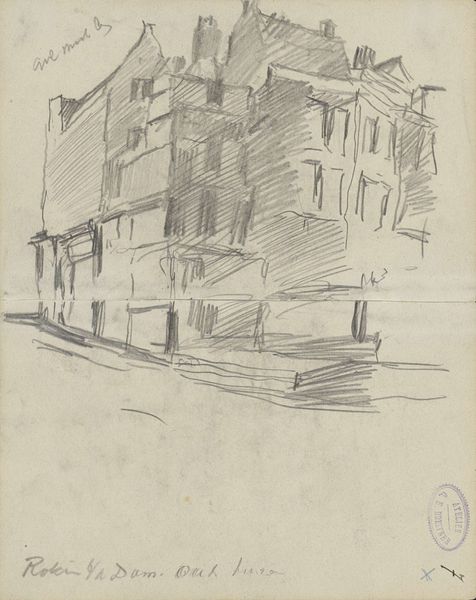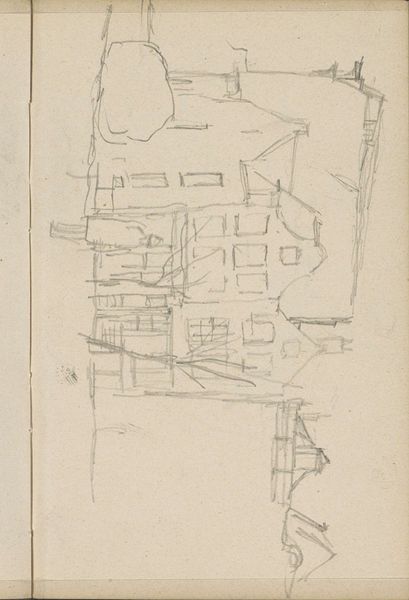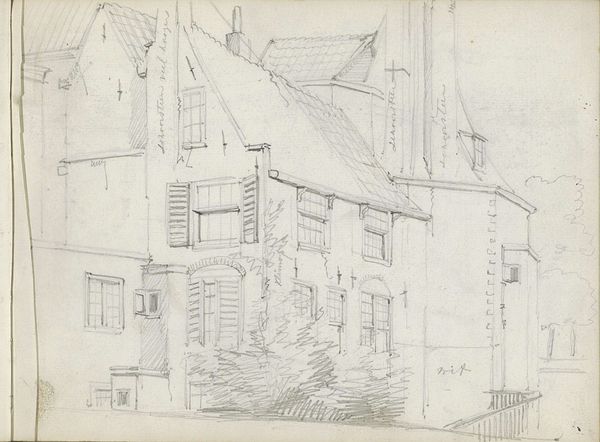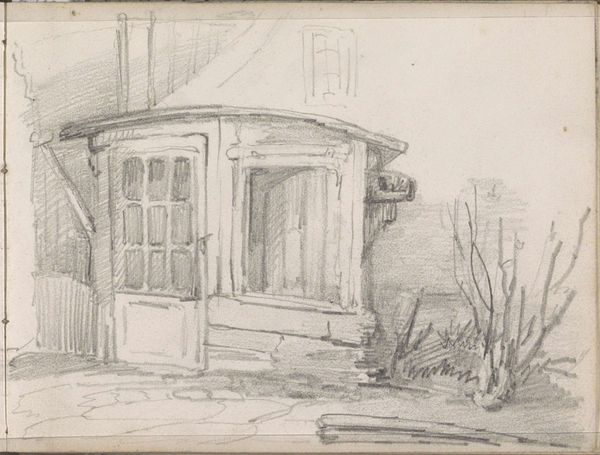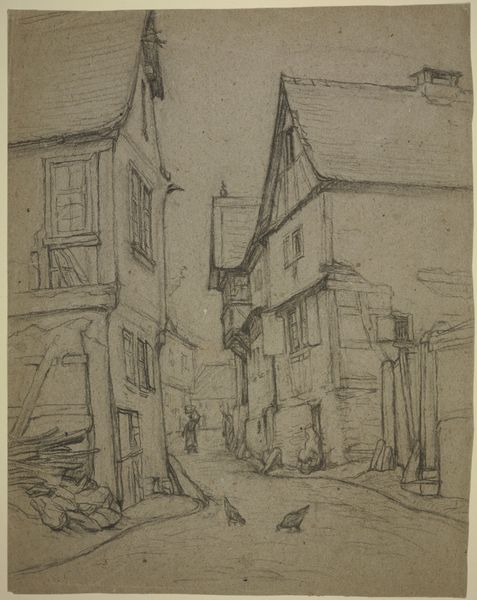
Hofje achter de Onze-Lieve-Vrouwekerk van Pamele te Oudenaarde Possibly 1907 - 1911
0:00
0:00
drawing, paper, pencil
#
drawing
#
landscape
#
paper
#
pencil
#
cityscape
Copyright: Rijks Museum: Open Domain
Curator: Breitner's sketch, "Hofje achter de Onze-Lieve-Vrouwekerk van Pamele te Oudenaarde", probably created between 1907 and 1911, is what we're looking at here. Editor: There's something quite haunting about it. It's stark and unfinished but invites us to imagine the stories held within these walls. The lines are so spare, yet they convey the feeling of lived experience. Curator: Indeed. He renders the almshouse using pencil on paper, focusing less on ornamentation and more on the structure. It brings forth questions about urban planning and affordable housing at the time, and how spaces were conceived for the poor and elderly. We also have to consider Breitner's labor here – what led him to this particular scene? Editor: Absolutely. And I can’t help but read the location itself, near a church, as significant. Almshouses were often tied to religious institutions, providing a specific kind of moralized, often gendered, support. This drawing, however fleeting, holds a powerful narrative of care, or perhaps the lack thereof. Where do we locate structures of support and social exclusion within the larger architectural landscape? Curator: Considering the materiality too, a simple pencil sketch on paper. The immediacy and accessibility of these materials suggest an urgency, perhaps even a commentary on the swift transformations happening in urban landscapes. How many of these almshouses were disappearing as cities expanded? And were those spaces repurposed with similar aims of societal care, or destroyed to serve a different material aim? Editor: And the little animal in the entryway-- what is that? A cat, maybe? Is it meant to symbolize loneliness, or maybe comfort? Those bare windows suggest a certain degree of exposure or a total lack of privacy as well, a life on display in the shadow of faith. Curator: It also might prompt us to ask, for whom was this sketch intended? Was it a study, a preparatory drawing for a larger work? Who was his audience and what statement about labor and urbanization was he making? The means of production for creating urban development are embedded within this humble drawing itself. Editor: Seeing this quick study invites broader inquiries concerning historical frameworks and reminds us that even seemingly neutral cityscapes have always been active participants in broader dialogues concerning identity, and space. Curator: It all becomes very intricately layered, even within the seemingly simplistic choices of medium and subject matter. Editor: Precisely, a quiet challenge embedded in what looks, on the surface, to be merely a landscape.
Comments
No comments
Be the first to comment and join the conversation on the ultimate creative platform.
